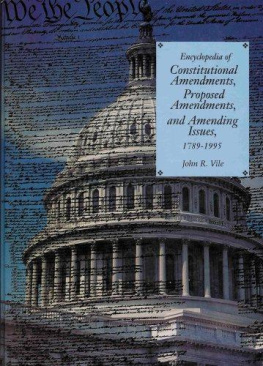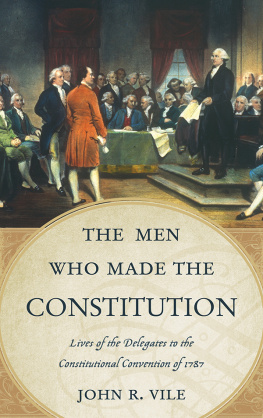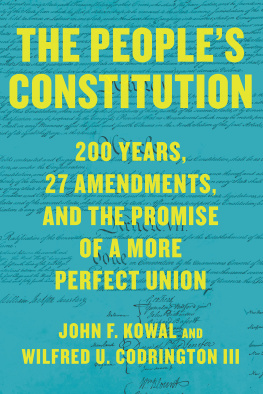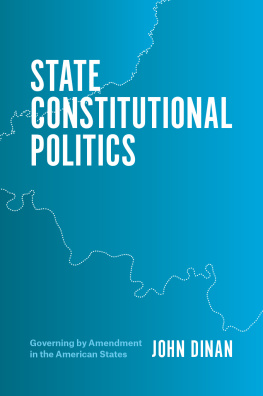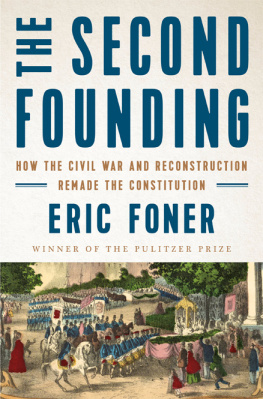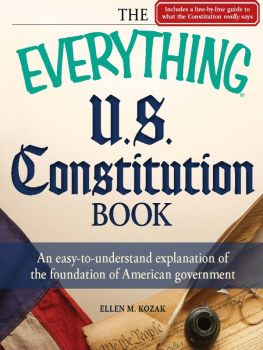A
ABINGTON V. SCHEMPP
(1963)
This 8-to-1 Supreme Court decision stimulated a number of proposed amendments to restore prayer and Bible reading in public schools. The decision covered both Abington v. Schempp, involving a Unitarian family in Pennsylvania, and another case in Baltimore involving an atheistic mother and son (Murray v. Curlett). Abington extended the Supreme Courts controversial opinion of the previous year in Engel v. Vitale, which had invalidated the recitation of a state-composed prayer in public schools. Abington held that, even in the absence of comments, student-led Bible reading and recitation of the Lords Prayer during school time and under the supervision of public school teachers violated the establishment clause of the First Amendment, as applied to the states through the due process clause of the Fourteenth Amendment.
Justice Tom C. Clarks majority opinion focused on the wholesome neutrality that the state was obligated to follow in regard to religion (Abington 1963, 222). Denying that his decision was antireligious or secularistic, Clark said that religion must depend for its support on the home, church, and individual conscience (Abington 1963, 226). Clark found that the practices in question were devotional rather than simply discussions of historical or literary material or nonsectarian attempts to foster morality. He therefore ruled that they lacked an overriding secular legislative purpose and that they had as their primary effect the promotion of religion (Abington 1963, 222).
Justice William Brennans extensive concurring opinion is notable for its insistence that establishment clause concerns need to be related to modern historical and educational developments rather than to any narrow view of the framers original intent. He also denied that the failure to adopt the Blaine amendmentitself stimulated in part by judicial decisions (see The Bible in the Public Schools 1967)precluded application of the establishment clause to the states. In addition, Brennan discussed previous unsuccessful attempts to adopt the Christian amendment, recognizing God in the Constitution (Abington 1963, 25658).
Justice Potter Stewarts dissenting opinion extended his earlier dissent in Engel by focusing on his paramount concern with religious freedom. Stewart argued that since students were permitted to absent themselves from the devotional practices and since there had been no direct showing of coercion, such practices represented acceptable accommodations of the exercise of the majoritys religious beliefs.
Abington indicated that, despite intense criticism and pressure for an amendment to overturn Engel, the Court was not going to back away from its earlier opinion. Still, early studies indicated that many public schools ignored the decision. One school superintendent responded to a survey by
amendments be proposed by two-thirds majorities of both houses of Congress or by a special convention called by two-thirds of the states. Such proposals then require ratification by three-fourths of the states. About 150 proposals, many redundant, have been introduced in Congress to alter this procedure.
Proposals for Popular Initiative or Referendum
A common proposal appears to have first surfaced around the time of the outbreak of the Civil War as a means of averting conflict by incorporating various slavery compromises into the Constitution. It would provide for some kind of popular initiative or referendum on amendments. Such proposals, which embody a form of direct democracy, were especially common during the Progressive Era, at the beginning of which there was a great deal of scholarly criticism of the amending process for being too rigid (Vile 1992, 13556). Common variants (for example, S.J. Res. 22, 1919) provided that amendments would be initiated by 500,000 or more voters and ratified by a majority of voters in either a majority of the states or in three-fourths thereof. Similarly, Wisconsins Republican Senator Robert La Follette proposed in 1912 and 1913 that amendments become effective after being proposed by 10 states or a majority of Congress and being ratified by a majority vote of citizens in a majority of the states (Musmanno 1929, 194). In 1923, Senator James W. Wadsworth of New York and Representative Finis J. Garrett of Tennessee proposed a back to the people amendment that would allow states to require a popular vote to affirm or overturn a state legislatures ratification of an amendment (Vose 1972, 246). A year earlier, in Hawke v. Smith (Nos. 1 and 2), the Court had invalidated such a provision in the Ohio state constitution.
Akil Reed Amar, a contemporary Yale law professor, has argued that the mechanisms in Article V are not exclusive and that citizens already have the right to propose or ratify amendments by popular majorities (Amar 1988). Similarly, Bruce Ackerman has proposed an alteration to Article V whereby a president could propose an amendment in his second term that could be ratified by a three-fifths vote in the next two elections (Ackerman 1991, 5455).
Proposed Changes in Ratification Procedures
Three sets of changes have been proposed that would alter current ratification procedures. One would limit the power of lame-duck legislatures by requiring that one or both houses of a state legislature ratifying an amendment must have been elected after the amendment was proposed. The House of Representatives actually added such a requirement to the Twentieth Amendment, but it was dropped in conference committee (Grimes 1978, 108). In a related vein, some proposals (for example, H.J. Res. 242, 1919) have attempted to ensure that a certain majority is present when such state ratification votes are taken.
A second set of proposals has attempted to set a time limit, usually five to eight years, during which states must ratify amendments. Currently, the Constitution sets no such limits, and although the Supreme Court decided in Dillon v. Gloss (1921) that amendments should be ratified relatively contemporaneously, in Coleman v. Miller (1939), the Court suggested that such decisions might be political questions. In 1992, the archivist of the Library of Congress and a vote in Congress certified the validity of the Twenty-seventh Amendment, even though it was not ratified until more than 200 years after being proposed.
A third set of proposals would tackle another unresolved issue by explicitly providing for state rescission of amendments prior to ratification by the necessary three-fourths majority (Musmanno 1929, 206).
thor of a recent study who investigated the progress of lawmaking and the success of congressional investigations since the end of World War II concluded that, surprisingly, it does not seem to make all that much difference whether party control of American government happens to be unified or divided (Mayhew 1991, 198). Another author critiquing the parliamentary model of fused powers has argued that legislative-executive party conflict can be healthy (Sargentich 1993, 707).
See also
.
DODD, WALTER F.
(18801960)
One of the most important books on the process of amending state constitutions was written by Walter F. Dodd. Dodd, a professor at Johns Hopkins University, published his book on state amendments in 1910. Although many of the specifics of this work are obviously outdated, Dodds book is still surprisingly relevant, especially in explaining the development and early use of the constitutional convention mechanism and its relation to the state legislature.
Next page
